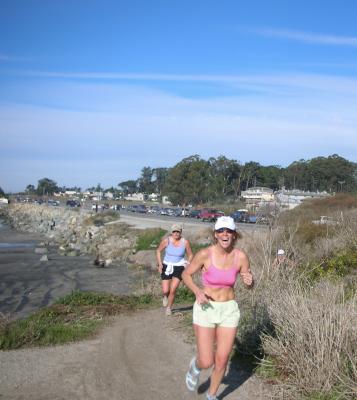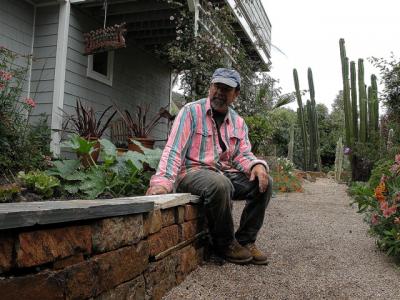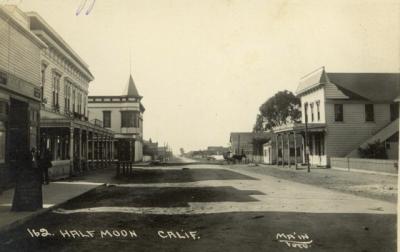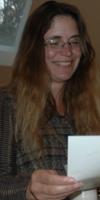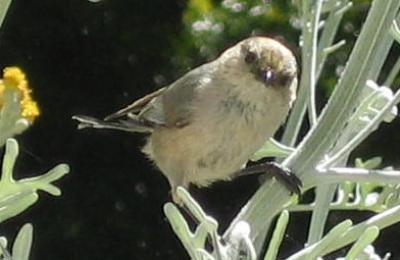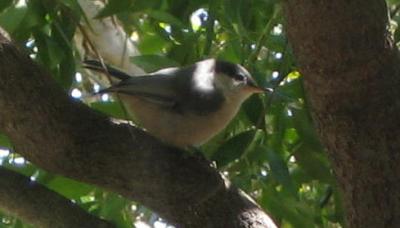I always enjoyed interviewing Miramar Beach’s impresario, Pete Douglas, because he’s a one-of-a-kind, accessible, and always more than honest. You WOULD NOT believe the big names that have played at Douglas’s Bach Dancing & Dynamite Society.
Some of you will read Pete’s words and “hear” exactly what he sounded like, talking with the ubiquitious pipe in his mouth, then pausing to laugh at what he said, then perhaps musing on some other internal revelation causing him to laugh again and conclude, “so that’s what that was all about”. Maybe he was solving the puzzles of his life while he talked. And Pete, who came from southern to northern California, loves to talk.
We were upstairs in Pete’s office at the Bach Dancing & Dynamite Society overlooking the Pacific Ocean in Miramar. His office, a desk and chair, was located in the big, spacious upstairs next door to the room where the jazz and classical concerts take place.
Here’s the beginning of the 1979 interview.
Pete: I was a bohemian of the 1950s, in college and after, anti-establishment, yetthere was the other straight side of me. I had a family and I had to get a job and I took a job in this county as an adult probation officer….It’s not like a regular job but it’s an official police sort of job which me very suspect with the hardcore beats that used to come through here.
June: What did being beatnik mean in the 50s?
Pete: A lot of good stuff out on that. The beatniks were a real extension of the American bohemia right on from the turn of the century, the 20s, the 30s, 40s and 50s. It was just another twist or continuation –however, the style it took was anti-establishment, anti-materialistic America. They had intellectual leaders like Sarte, the French writer, and the San Francisco poet Lawrence Ferlinghetti.
We are interrupted as the phone rings.
Pete: Douglas speaking. Yeah. Every Sunday. This Sunday is the guitarist Charlie Byrd. And then following that is Coke Escovido 13-piece Latin Jazz Orchestra. Yeah, we’re hardcore jazz, although we do a greater variety of it, like traditional, swing, bop, mainstream, progressive, spacey, funk, Latin. Yeah, I’ll mail you something right now, and if you want ot remain on the mailing list it’s $3.00 a year. What’s your name? Carder? Oakland? Tremendous this fall. We’ve got a blues thing, Sunnyland Slim and Eddie Clean Head Vincent on the 9th, David Fathead Newman on the 16th, Zoots Sims….We’ve been doing this for 14 years. Every Sunday. That’s the only time we do it. Right on the beach. Beautiful small roomm for jazz. Bring your own juice. Okay.
Pete hangs up the phone and he’s back into the interview with me.
June: Would you say the Bach has some of the finest jazz music in the world?
Pete: Now I could say yes. We have the best instrumentalists in non-classical music, which tends to be jazz oriented but not all of it is hardcore jazz.
June: Is it the only jazz house of its kind in northern California?
Pete: Kummbwa Jazz Center in Santa Cruz –they incorporated as a non-profit music organization and they do primarily jazz once or twice a week. And they followed our pattern. That’s the only other non-profit I know of.
June: And you’ve always had a fascination with the beach ever since you were down at Hermosa and the Lighthouse? Where does that fascination come from?
Pete: Some people like the beach, the whole space. Beach communities are liberal, live and let live, more tolerant, and, of course in Southern California there’s a lot of action on the beach whether it be jazz or other things. Going back to the 20s and 30s big dance halls were all on the beach, amusement parks, that kind of thing. That’s the only place I felt a sense of freedom, on the beach as opposed to the conventional residental setting.
June: You say you lived like a beatnik. What does that mean?
Pete: Well, the beatnik style of dress was merely any odd collection of clothing that you pick up for very little money. …In other words to exist without the conventional jobs, to exist without the 9-5 jobs–the freedom to deal with your interest in arts and crafts….Jazz has always been associated with and still is the minority music, a protest music, an unconventional music as opposed to our European musical traditions.
June: I’ve noticed that you’ve changed your attire from what you used to wear.
Pete: The only thing that’s changed is that I used to wear sneakers, ratty old sneakers….I’ve been wearing Levis since I was 11-years-old. And in Los Angeles on the beach it was Levis and Levis have only changed to the extent that they’re slightly flared with a belt. Prior to the Mod scene of the 60s, it was not cool to wear a belt. In my case I’ve had these old captain’s hats and I also wear a turtleneck because they’re comfortable when it’s cool.
June: Didn’t you want to run your own espresso house?
Pete: Oh, yeah. Even in Santa Barbara, before I got out of college. Oh, by the way, being a graduate of college was not exactly in the beat tradition. They were drop-outs. But I was a dual person coming from–and this was not unlike the freaks of the 60’s–a lot of ’em were upper middle class kids who revolted against everything, and a lot of the beats were upper middle class kids. Some of em were just bums. Took on the appearances because it was fashionable. The beats had to survive with some kind of economic ‘mom and pop’ store. If they could figure out how to do it, live off the crumbs of society….
June: This little building downstairs–was it originally built in the 1940s?
Pete: I think it was built around 1947.
June: So before that there was nothing here?
Pete: No.
June: (Regarding the ‘little building’ downstairs) I remember you looked through the Police ‘blue sheets’. What did you find?
Pete: Felonious assault, burglary. See, it was run by Gladys Klingenberger and her husband, Carroll.
June: Do you think they’re still alive?
Pete: I think Carroll died and I just don’t think Gladys is around. I last saw her over ten years ago at the Miramar Hotel, (burned in the 1960s) at the bar, juiced, bad mouthing everybody as usual.
….To Be Continued

